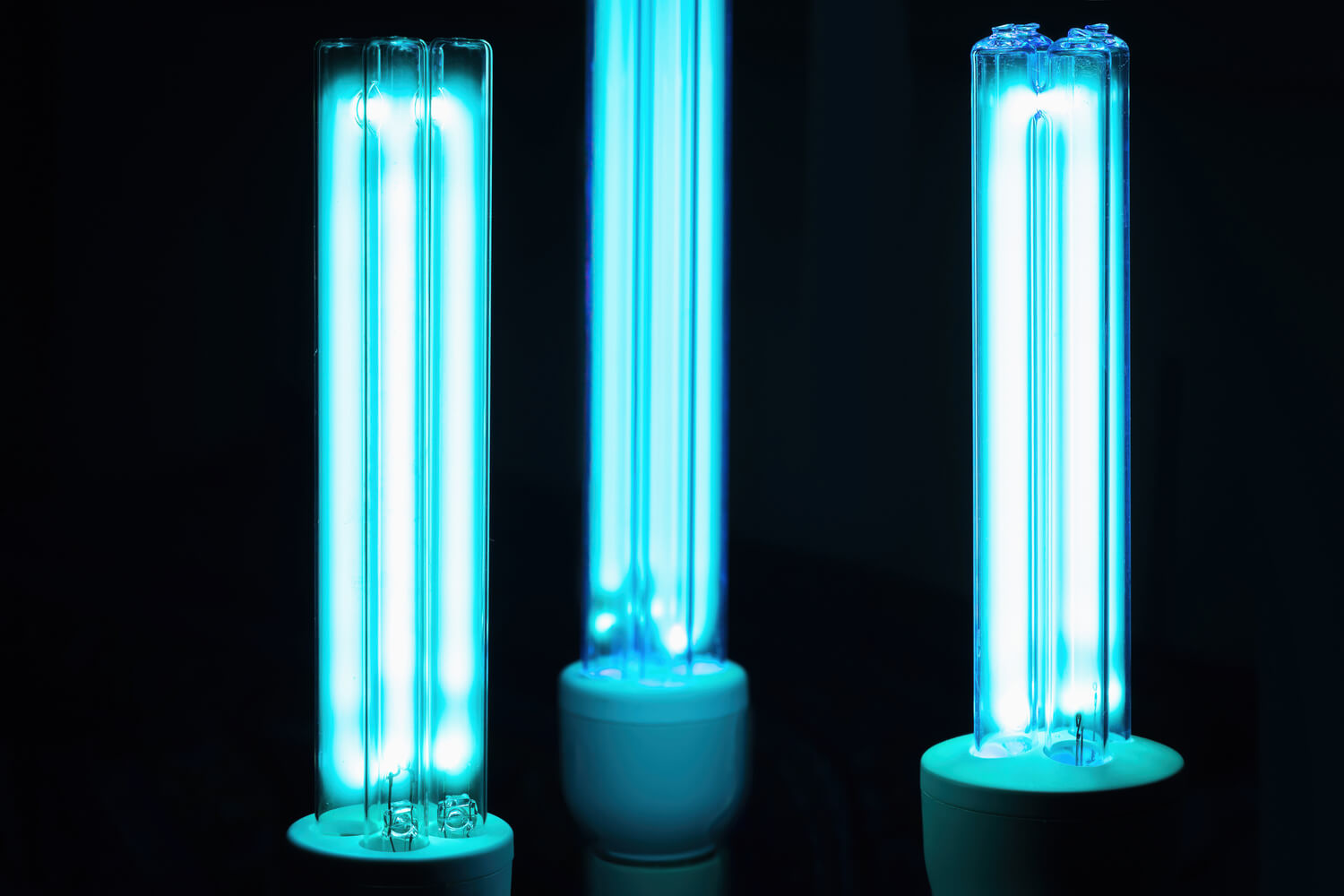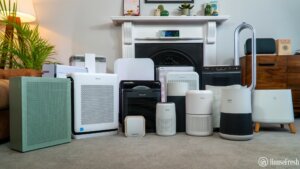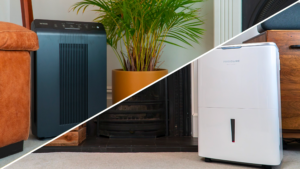The onset of COVID-19 has had a drastic effect on all of our lives. Not only has this deadly virus changed the way we live, work, and interact with others, it has also led to a worldwide focus on what we could do to remove it from our environment.
At the beginning of the pandemic, American families were advised to start disinfecting groceries, washing their clothes more regularly, and cleaning door handles after each touch, all to avoid surface transmission. However, research later found that surfaces were an unlikely route of transmission for most people.
As we learned more about the virus, many studies concluded that airborne transmission was the main way that SARS-CoV-2 spread. So, this became the primary focus for air purifier companies to show how their products could kill and remove the virus from the air.
It’s worth noting that the main ways to stop this airborne transmission of SARS-CoV-2 is through masks, social distancing and ventilation. The CDC also recommends using HEPA air purifiers to remove virus particles from the air.
The evidence for HEPA-based air purifiers is pretty conclusive for a technology that was first invented during World War II and is very effective at removing viruses from the air.
While HEPA is great for removing virus particles from the air, it will not directly kill viruses, and there is the potential for these viruses to get back into the air. This is where UV-C light air purifiers come into play.
What is UV-C light?
UV-B is a type of ultraviolet rays many people will recognize as this is what causes sunburn and potentially skin cancer.
But, what about UV-C?
UV-C is a type of ultraviolet light with a shorter wavelength than visible light but longer than X-rays:
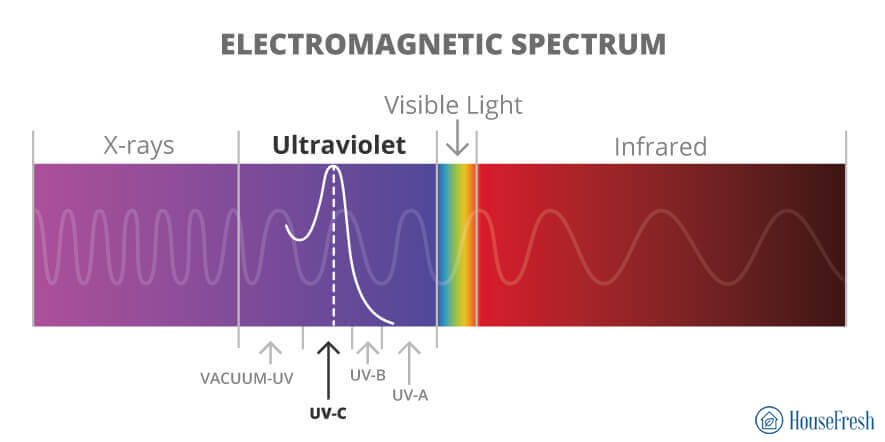
UV-C wavelength (254nm) is extremely damaging to any living creature, including viruses, as it directly damages DNA molecules and is perfect for killing viruses like SARS-CoV-2.
This is one of the reasons that UV-C-based devices are used to sterilize operating equipment in hospitals.
The CDC supports using upper-room UVGI devices to help kill viruses in the air of a room. However, these units are custom-fitted by an HVAC professional and cost around $2000 per 500 sq. ft.
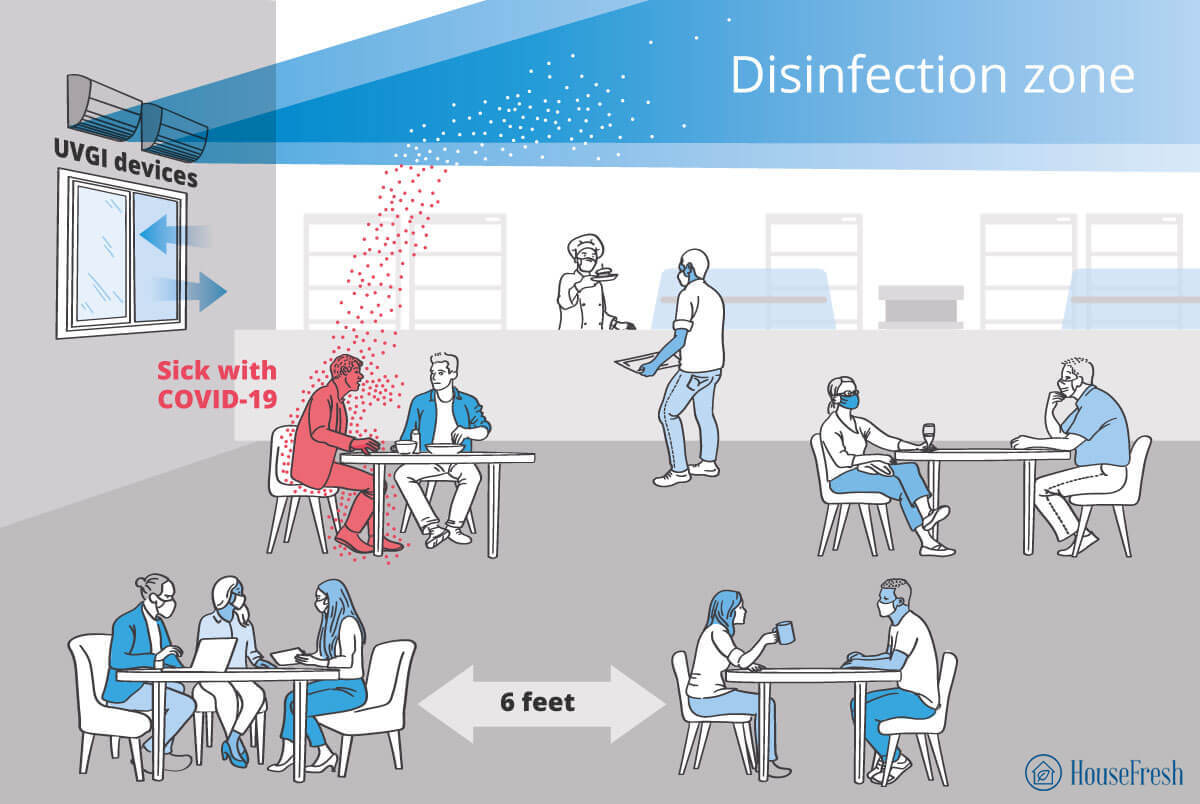
These units are used above where people move to avoid direct exposure to UV people in the room.
The problem with UV-C air purifiers
Using UV to clean air, like HEPA, is not a recent technology. Back in the 1930s, it was used in Philadelphia schools to keep the air clean and control the spread of measles.
While research shows that UV-C can effectively kill viruses, it isn’t a magic bullet, as the waves need enough time to interact with the virus particles, which can be blocked by dust or other particles in the air. This is why hospital units take over 30 minutes to sterilize devices in a biosafety cabinet.
In addition to this, most studies on UV-C air purifiers were done under strict conditions that are unlike the situation for most consumers.
Many air purifier manufacturers are adding UV-C light bulbs to existing HEPA units. But, as you can see, CDC-recommended upper-room UVGI devices are very different from portable air purifiers with small UV-C bulbs.
We also worry about the potential for direct exposure to UV-C light to the humans and pet companions in the room. Remember that UV-C wavelength damages DNA molecules, making it highly problematic for any living creature (not only viruses and bacteria).
Should you get a UV-C air purifier?
UV-C will be a key part of the fight against viruses in the future, but the evidence is still not clear enough to support their usefulness in portable air purifiers.
A quick look on Amazon.com shows that UV-C has become the latest jargon to sell specific air purifiers, but I would be wary of most of the units that employ this technology. Many of these units will use UV-C lamps that are not powerful enough to significantly affect viruses in the air.
It doesn’t mean that UV-C is something we will ignore forever.
There might be improvements to this technology in the future, and, as a result, we might see new consumer air purifiers with UV-C light being released that provide value and that mitigate the potential dangers associated with UV-C.
But right now, we would recommend going with a HEPA-based air purifier because they have been proven in numerous peer-reviewed publications to remove viruses and other particles from the air without any potential adverse side effects.
If you’re looking for an air purifier to help tackle viruses and bacteria, you should check out my top picks based on our testing and careful evaluation.
SOURCES
- Greenhalgh, T. et al. (2021). Ten scientific reasons in support of airborne transmission of SARS-CoV-2. thelancet.com
- Environmental Protection Agency. (2021). Indoor Air in Homes and Coronavirus (COVID-19). epa.gov
- Centers for Disease Control and Prevention. (2021). Improving Ventilation in Your Home. cdc.gov
- Lewis, D. (2021). COVID-19 rarely spreads through surfaces. So why are we still deep cleaning? nature.com
- Wells, W. F. et al. (1941). The environmental control of epidemic contagion. ghdcenter.hms.harvard.edu
- Barnewall, R. and Bischoff, W. E. (2021). Removal of SARS-CoV-2 bioaerosols using ultraviolet air filtration. cambridge.org
- Centers for Disease Control and Prevention. (2021). Upper-Room Ultraviolet Germicidal Irradiation (UVGI). cdc.gov
- Mousavi, E. S. et al. (2020). COVID-19 Outbreak and Hospital Air Quality: A Systematic Review of Evidence on Air Filtration and Recirculation. pubs.acs.org

